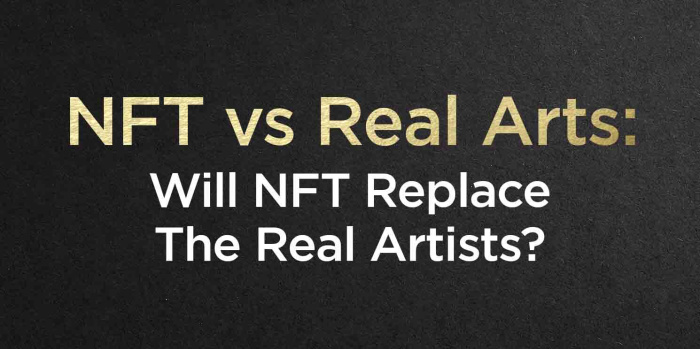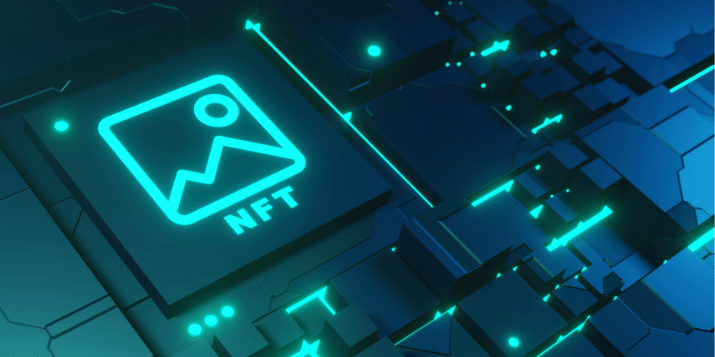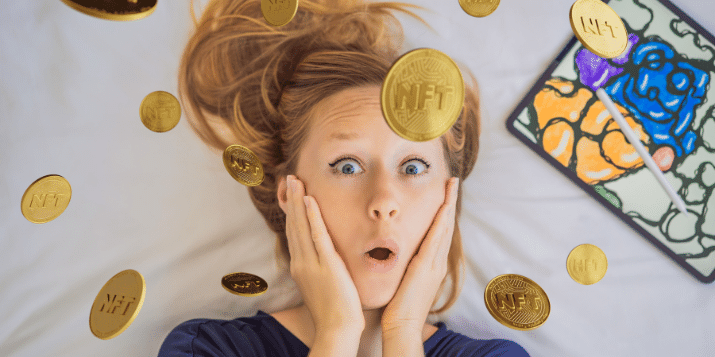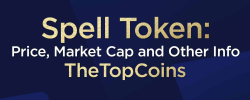
NFT vs Real Arts: Will NFT Replace The Real Artists?
Introduction
Not only has the digital realm allowed for claims to online alter egos or avatars, but it has also brought in new types of digital ownership. Art is being made, viewed, and held in new ways thanks to the rise of the online economy. If post-internet art catapulted artworks into immateriality, Crypto art, which employs blockchain technology, is bringing a new generation of art collectors into being.
Should you retain the NFT or the actual artwork? Which investment will be more beneficial? It's difficult to say—certain NFTs command high prices, but not all of them. What occurs in the coming years is difficult to anticipate, as it is with any new creative form. And anyone looking to make investment-like returns should be aware of the problems associated with NFTs.
What is NFT, and How Does This Work?
The term "non-fungible token" refers to a token that is not fungible. That certainly doesn't imply anything at this point; the term 'fungible' isn't used very often. It does, however, imply that anything is replaceable.
Money is a fungible asset in economics. It features units that can be readily swapped (for example, a £20 for two £10s) without losing or gaining value. Gold, cryptocurrencies, and stocks are all examples of fungible assets.

Non-Fungible Tokens are digital data units that are stored on the blockchain ledger. Each non-fungible token acts as proof of identity, proving that a digital asset is unique and not interchangeable. An NFT can never be edited, amended, or stolen due to the cryptographic principles that characterise the blockchain.
NFT vs Real Arts
NFTs undoubtedly solve a real problem in the context of the art market. Normally, digital files, and hence digital art, may be freely copied, downloaded, and shared. NFTs have two key features: they add a layer of validity by certifying ownership, and they generate scarcity by limiting the number of owners to one or a few. This mix of ownership verification on the one hand and scarcity creation on the other allows digital art to be collected and exchanged in the same way that non-digital artworks are.
NFTs may also affect the art business in other ways. To begin with, they may cause a shift in the way art is traded and even described. Through a platform, digital artists may sell directly to collectors, bypassing dealers and galleries. This might explain why auction houses are so eager to enter this industry in order to ensure that they are not overlooked.
Second, NFT contracts may include an automated function that gives artists a portion of any resale transaction. This is extremely beneficial to the artists since they have not always benefited from the selling of their own work in the past.
Disruptor In The Art World
By definition, digital art may be replicated. This aspect is possibly the greatest way to comprehend why the new format in art is so diametrically opposed to all that has come before. It has been the most significant disruptor in the art world for a generation, whether through evolution or revolution.
Some critics accuse it of being a fad, claiming that it's simply a bunch of rich people having a joke and inflating prices for a laugh, while others argue that it has all the markings of long-term viability: first, recorded official ownership, and second, the aspect of scarcity, allowing for trade in the same manner as actual art.
Authenticity and Validity
Although the undeniable quality of NFTs' record of ownership and validity is one of its most lauded features, the asset stored therein can detract from this.
A hacker sold a phony Banksy artwork as an NFT through Banksy's own website in August 2021 for $336,000 (£245,524). While this is an extreme case of an NFT art scam that mimics the concept of genuine art counterfeiting, it raises questions regarding NFT value.
Scarcity
Scarcity and uniqueness can drive the monetary worth of pricey fine art. That is why, in the late nineteenth century, Parisian galleries began to restrict and individually number the prints they sold. However, uniqueness is not an intrinsic property of digital art. Cyber artworks are easily accessible and infinitely replicated online (Beeple's costly artwork is on his Instagram account).
Traditional, older art collectors may place a premium on items that may be shown in a gallery. However, for millennials and Generation Z, who have grown up in an increasingly digitized environment, owning real goods isn't always a top concern. The cloud is where you may find music, movies, books, and images. As a result, people are content to purchase NFTs of cyber creations, which they carry around on their phones and see on crypto art sites like Foundation .app.
Scope of Manipulation
If someone buys a work of art that was made in the actual world, such as a sculpture or a painting, it's quite safe to infer that it's genuine and not a forgery simply by looking at it because it would take a lot of labour to replicate it. The contrast nowadays is that photography begins with a digital file, which is equal to what a film negative was for older film cameras. Unlike film, however, a digital file can be duplicated millions of times and then printed millions of times without losing quality. This implies that even if photographs are purchased as tangible framed photos, scarcity is far more difficult to achieve.
Future of NFT

NFTs provide up hitherto untapped prospects for new business models, and it is precisely this that contributes to the NFT's future worth. Artists may attach terms and conditions to the NFT that ensure they earn a percentage of each resale, which means they will gain if the value of their work grows.
NFTs enable musicians to give enhanced media and additional incentives to their fans. In the sports industry, 50 to 80 percent of things are thought to be counterfeit. Counterfeiting may be solved by converting these goods into an NFT with a transparent transaction history all the way back to the inventor.
Outside of these domains, however, the potential of NFTs is significantly greater because they entirely alter the laws of ownership. Transactions involving the transfer of ownership of anything typically relied on intermediaries who built confidence in the transaction and secured the flow of money from hand to hand.
Final Thoughts
The NFT's eventual objective may not be art, despite its promise of "art for everyone." Art might just be a good tool for publicizing the capabilities of new technology.
Perhaps the greatest lasting impact of the NFT's attack on the art market will be the questions it drives us to consider about the nature of art and what we want from it. What is the proper way to exchange and appreciate art? Is there a moral or aesthetic code that artists are supposed to follow, and who has chosen to establish it? Then there's the main question: is there a significant distinction between an artwork and an asset? Perhaps not always – but if we want art to be more than a tool for prettifying finance and peddling trinkets, it's an ideal worth preserving.







Leave a Reply
25 comments
Add comment ×